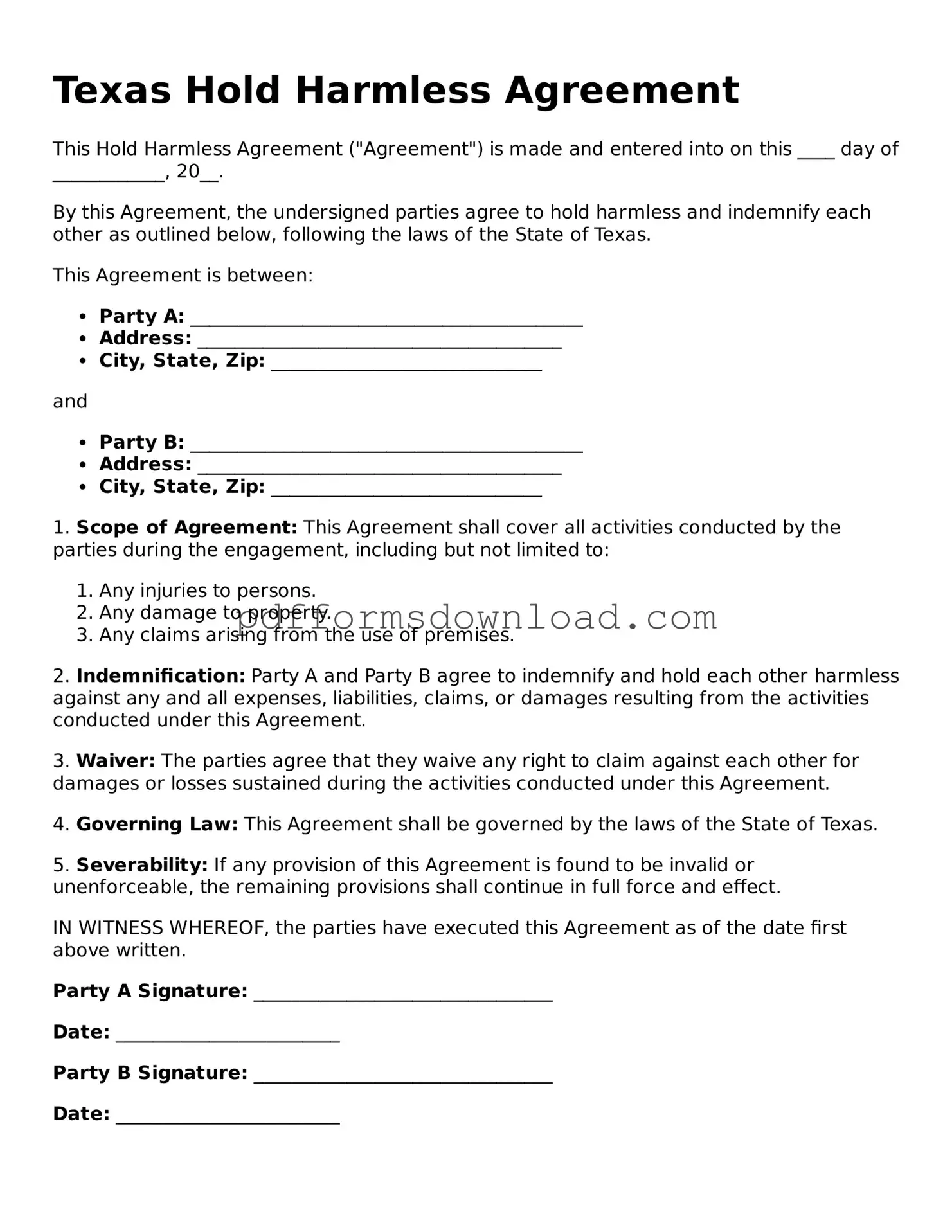What is a Texas Hold Harmless Agreement?
A Texas Hold Harmless Agreement is a legal document that protects one party from liability for certain risks or damages that may arise during a specific activity or event. This agreement is commonly used in various situations, such as construction projects, events, or rental agreements, where one party agrees not to hold the other responsible for certain claims or damages.
Who typically uses a Hold Harmless Agreement?
This agreement is often used by property owners, contractors, event organizers, and businesses. For example, a property owner may require a contractor to sign a Hold Harmless Agreement to protect themselves from liability for injuries that occur on their property during construction work.
What are the key components of a Hold Harmless Agreement?
A typical Hold Harmless Agreement includes the names of the parties involved, a clear description of the activity or event, the specific liabilities being waived, and the duration of the agreement. It may also outline any exceptions to the waiver, such as gross negligence or willful misconduct.
Is a Hold Harmless Agreement legally binding?
Can a Hold Harmless Agreement protect against all types of liability?
No, a Hold Harmless Agreement cannot protect against all types of liability. Generally, it will not cover liabilities arising from gross negligence, intentional misconduct, or illegal activities. Each agreement should clearly specify the scope of protection to avoid misunderstandings.
Do I need a lawyer to create a Hold Harmless Agreement?
While it is not legally required to have a lawyer draft a Hold Harmless Agreement, it is highly recommended. A legal professional can help ensure that the agreement is comprehensive, clear, and compliant with applicable laws, which can prevent potential disputes in the future.
How do I enforce a Hold Harmless Agreement?
To enforce a Hold Harmless Agreement, the injured party must demonstrate that the agreement was valid and applicable to the situation. This may involve presenting the signed document in court if a dispute arises. Keeping thorough records and documentation related to the agreement can also help in enforcement.
Can a Hold Harmless Agreement be revoked?
